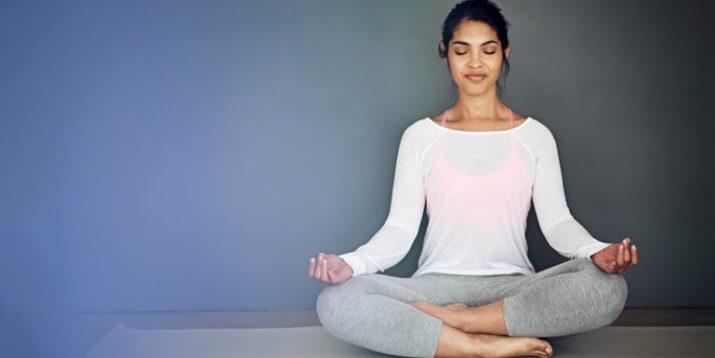10 Types of Meditation: A Comprehensive Guide
10 Types of Meditation: A Comprehensive Guide
In today’s world, stress is but an inevitable part of daily life and often, there is not much that you can do when the barrage of stressors come your way. However, there is a lot that you can do about how you react to them and meditation provides you with a powerful tool that you can use to make that change. Meditation has increased in popularity as the need to reduce stress has also intensified. While it has been mostly associated with Buddhism, Hinduism, or other religions, meditation can be secular in the modern sense. If anything, it gives you an opportunity to tidy up your thoughts and keep your brain from getting pulled in different, dizzying directions.
The power of meditation lies in its ability to help you deal with the stressors, negative thoughts, or pent-up emotions. It is practiced around the world by various cultures as it plays a vital role in the attainment of inner harmony and a pure sense of calm. Its aim is in helping you find awareness and achieve peace. As such, there is no right or wrong when it comes to how you do meditation. What you need to find though is a practice that answers your individual requisites, matches your skill set, and complements your unique personality. There are several well-known types of meditation that you can explore and try until you find the right one for you.
Take a FREE test drive for 14 days! In addition to world class workouts you also get access to over 90 meditations. Are you ready to lose weight, build muscle, or feel more fit? Join Beachbody On Demand, and get unlimited access to Beachbody’s world-famous programs, including 10 Rounds, 80 Day Obsession, Liift 4, 21 Day FIX®, Body Beast, Insanity, The WORK, Barre Blend, TurboFire, PiYo, P90X®, 21 Day Fix Extreme, T25 and 100’s more. Don’t miss out on your chance for amazing results. Sign up today!
You will know when it is the one if it makes you feel comfortable and motivated every time you practice. Here are the 10 types of meditation you can dig into:
- PROGRESSIVE RELAXATION
Progressive relaxation is meditation that allows you to scan your body for any area of tension. Because of this, it is also called body scan meditation. The goal with this kind of meditation is to look for the tension and then be able to release it. During a body scan meditation session, you can start on one end of your body, like your feet, and then work your way up to your whole body.
Some forms of this practice requires you to tense your muscles and then relax them. Remember to do it gradually though. Slowly tighten and then relax one group of your muscles at a time throughout your body. Meanwhile, with other imaginative forms, you are encouraged to visualize a gentle wave and allow it to drift over your body, releasing the tension along the way.
Progressive relaxation is likewise meant to promote feelings of calmness and alleviation. As such, it can help with all sorts of pain including chronic pain. As it slowly and steadily makes one feel relaxed, some practitioners use it to help them doze off. This is perfect when you want to sleep but find it hard doing so. Your body can be doing one thing but your mind can be elsewhere. Progressive relaxation technique facilitates syncing your body and mind through a mental scan starting in one direction, say the top of your head and then down to your toes.
It’s like being under a photocopier machine with the light moving slowly through your body but pausing a bit where you may feel any ache, tension, or discomfort. Definitely the type of meditation to relieve you from stress or to help you unwind before going to sleep.
-Grab some great meditation accessories on Amazon–
- VISUALIZATION MEDITATION
Visualization as a type of meditation bids you to picture out someone or something in your mind. You can do this by essentially replacing your breath with a mental picture as your object of focus. It can seem challenging at first but all it really requires is you thinking about an old friend or the face of a loved one you miss. When you do it this way, it does not come as an effort but something that comes naturally and lets you see what you are visualizing vividly.
As you meditate, the same principle will hold true. When you conjure up a specific visualization in your mind, it allows you to observe your mental process and focus on any physical sensation you may have. The key to visualization meditation is to be able to visualize positive images or scenes to enhance your feelings of calmness, peace, and relaxation. To do this, you have to be able to imagine that picture or scene as clearly as you can down to the smallest detail using your five senses.
Another potent form of this type of meditation entails imagining yourself achieving success over some specific goals that you have set. It is intended to empower you, increase your focus, and strengthen your motivation. In this sense, it can feel like it’s counterintuitive to put together visualization and meditation in one place. Besides, meditation is about letting your thoughts flow freely rather than making a conscious effort to direct them toward a specific result. On the other hand, visualizing invites you to focus on a specific person, event, or goal that you want to attain and be able to hold it steadily in your mind – imagining your desired result becoming a reality.
In this regard, visualization meditation is meant to build on regular meditation by adding visualization and mindfulness technique into the mix. After your mind reaches a relaxed state, you can direct it towards the specific outcome that you would intend to achieve. Visualization meditation is associated with numerous health benefits including improved relaxation, relief of depression and anxiety symptoms, increased athletic performance, greater compassion towards self and others, improved sleep, pain relief, better stress management, improved emotional wellness, and enhanced self-confidence.
- MANTRA MEDITATION
If you dissect it, the word mantra is quite meaningful with “man” referring to the “mind” and “tra” meaning “release”. Accordingly, mantra in meditation may be composed of a word or a group of words that you repeat during the meditation session that helps you to “release your mind”. Because of this, mantra becomes a useful tool that facilitates your concentration smoothly especially when you are having difficulty focusing or getting into the right mindset. For a lot of people, using a mantra boosts awareness and improves concentration. And because it helps with your focus, it translates to improved results in your meditation practice.
Mantra meditation can be likened to focused attention meditation which requires you to focus on your breath to calm your mind. The main difference with mantra meditation is that the focus is on the mantra that can be composed of a syllable, word, or phrase. Beyond the syllables or the words however, it is in the subtle vibrations that are associated with the mantra as they are repeated that positive change is encouraged. Whether it’s compassion for other people or a boost of self-confidence, the same vibrations guide you into entering a deeper state of meditation.
Because of this, mantra meditation has become a prominent part of many teachings including that of the Buddhist and Hindu traditions. A popular sound that you can associate in this case would be “Om” uttered repeatedly. However, whatever mantra you choose, you can opt to say them quietly or chant them loudly. Either way, chanting the mantra after a while will make you more aware with your environment and in tune with yourself. And as you keep going, your level of awareness likewise deepens.
If you are finding it hard to focus on your breath, then you can try mantra meditation and focus on a word or a phrase instead. In the same way, this is good for people who would rather keep repeating words than wallow in utter silence. You know yourself better and you would know best if this will work for you. One thing’s for sure and that is whichever type of meditation you use, you will still reap the benefits.
- TRANSCENDENTAL MEDITATION
One of the more popular types of meditation is transcendental meditation. Transcendental Meditation is typically used as a technique to avoid distracting thoughts and promote a kind of relaxed awareness. This type of meditation has garnered the attention of the scientific community and has been the subject of many studies. You can say that it is the more customizable type of mantra meditation as it allows for the use of a mantra or a word series that is specific to the person doing the meditation.
If you like structure and is serious about doing meditation practice for the long term, then transcendental meditation or TM might be for you. A variation to TM is developed by a yogi guy by the name of Maharashi Mahesh Yogi. He might be familiar to you as he used to hang out with no less than the Beatles. He derived transcendental meditation from India’s ancient Vedic tradition then brought it to the US in the ‘60s.
As mentioned earlier, you have to pick a mantra that you wish to focus on. It could be a word that is meaningful to you or feels right, say “heal”, “overcome”, “strength”, or “success” – the power is in the words. With your choice of mantra ready, quietly sit and then repeat it to yourself silently. Make sure that you are in a comfortable sitting position. And then, with your eyes closed, repeat the mantra in silence to focus your concentration. Now, your mind is bound to wander at some point but don’t panic, just take control and steer you mind back to your mantra.
Supporters of the transcendental type of meditation confirm that when meditating, the regular thinking processes are transcended and then replaced by what they describe as a pure state of consciousness. Such a state is where one achieves perfect stability, stillness, order, rest, and a complete lack of mental boundaries. All forms of meditation, including TM, are generally safe and can result in the improvement of your quality of life. Some studies have shown that regular meditation can result in reduced chronic pain, high blood pressure, anxiety, cholesterol, and use of medical services.
- SPIRITUAL MEDITATION
In essence, spiritual meditation as a mindful practice involves a connection to something higher, greater, and deeper than yourself. It may come out as paradoxical but in order to make that connection, you first have to go through honest-to-goodness, authentic self-reflection. Like other meditation techniques seeking to increase awareness, spiritual meditation requires authenticity and an attitude of integrity when looking at yourself and at the world as a whole.
Meanwhile, even if it is used in Eastern religions like Daoism and Hinduism, it is not limited to any specific religion, faith, or belief as anyone can follow a guided meditation of this type. In some ways, it is like a silent prayer as you reflect on the things around you and pursue a deep connection with the universe or your God.
Take note though that reaching a state of spiritual awareness using meditation is a process and thus takes time. Certainly, progress is not going to be an overnight thing for you but it is all for the best especially when quick fixes only lead you to catastrophic results. To achieve spiritual realization, it will take a lot of practice and discipline from you. In the long-term though, the benefits are simply incomparable and if your spiritual life is important for you, nothing will be too difficult to achieve. The benefits have a ripple effect as your spiritual awareness and confidence increases, your desire and ability to help others likewise intensifies.
To heighten your spiritual meditation experience, essential oils are a popular option to use including myrrh, frankincense, cedar, palo santo, and sandalwood. You can practice at home, in places of worship, or in other special meditation spaces. Spiritual meditation is recommended for those who seek spiritual growth and those who feel revived in the silence.
- MINDFULNESS MEDITATION
Mindfulness meditation is a technique that originated from Buddhist teachings and is considered one of the most sought after practice in the West. This type of meditation combines awareness with concentration. It is great for people who do not have a guru to guide them because it can be easily done alone. When practicing mindfulness meditation, you have to pay attention to the thoughts that pass through your mind. You do not make any judgments of the thoughts as they come nor do you become involved with any of them. What you do is just observe and take special notice of the patterns. While observing any thoughts, feelings, or physical sensations, try to focus on your breath or a certain object to help you pull through.
Like the transcendental type of meditation, mindfulness meditation entails starting with a focal point – usually your breath. For a little while, that will hold your concentration before thoughts or sensations will try and compete for your attention. As this happens, do not attempt to steer clear of them and instead accept them without making any judgment and just let them pass like waves on a shoreline or the clouds in a clear, blue sky. What can help is that you assign tags to what you are experiencing so you can continue to observe your thoughts passively.
So for example, while you are meditating and the thought of your ex came to you, do not let any negative feelings towards it consume you. Instead of continuing on that path, assign it a certain tag to describe your feelings like anger, hatred, or desperation. After that, you can repeat a tag in your head, distance yourself from the thought and emotion, and just let it pass. You will see that mindful meditation is an incredible tool to use to manage your emotions. It is also powerful in pain management as you can isolate and passively accept the pain instead of allowing it to consume you.
- YOGA MEDITATION
You know of yoga to be a physical practice, what with the different yoga poses and working on mastering your breathing. But a big part of a holistic yoga experience actually involves the act of focusing your mind via meditation. It is important to note however that yoga meditation means much more than just sitting motionless for minutes daily because the mind could still be sifting through tons of worries or other thoughts despite this relaxed stature. As such, this type of meditation likewise involves quieting down your predominantly busy mind. And the more that you are able to calm your flow of thoughts, the more that you will be able to experience that sense of being present in the now.
True presence or being in the moment is what helps create that all-important mind-body connection that essentially characterizes yoga. A beginner in the yoga meditation practice can learn more easily just by focusing on the here and now. Being mindful and focusing on the moment prevents distracting thoughts with regards to the past or the future from unnecessarily diverting your attention. Often, you can get stuck with thoughts that you can’t do anything about, but if you just focus on the moment, you will see how it can feel very liberating.
What’s highly recommended is that you start with active meditation by focusing your mind on something specific. The trick is to be able to streamline your concentration to only one thing at a particular moment such as gazing at some candle flames or solely minding your breathing. When you are first trying out this technique expect that at some point, your mind will begin to wander. Be prepared for this and catch yourself immediately. As soon as you are aware how your mental focus have wandered elsewhere, immediately redirect your thoughts back to the present.
As a step by step process, the first thing to do would be to set aside a few minutes each day to do your yoga meditation. Choose a time when you are able to do so without much interruptions – for some this could be before sunrise but for others, it could be after a day’s work. Since this is yoga meditation, you can coordinate your practice so that you do it before a yoga session or after. Next, sit on the floor cross-legged but with good posture and make sure to switch the leg that you cross on top every time you meditate. If it’s more comfortable for you, you can also sit on a chair.
Then, gaze at a certain object like a dot on a piece of paper or a flame on a candle – just make the object as simple as possible. Once you get the hang of it, you can increase your meditation practice gradually by one to two minutes at a time. The more you practice, the more successful you will be with your yoga meditation. Your yoga teacher can also set aside time for meditation during your group class. Don’t worry though because the most serious of yogis even practice it for a lifetime just to hone their skills, so it does not make sense to pressure yourself to perfect it at once. When it comes to yoga meditation, the goal is not to achieve a blank mind but to resist the temptation to react to thoughts that pop in your head as they come.
- MOVEMENT MEDITATION
Of course the benefits of meditation are not to be ignored. However, it cannot also be denied that anyone can just sit and stay still for the duration of the meditation session. Even you may be challenged by the fact, you just do not have the time to sit and actually enjoy not doing anything active. Fortunately for you, there is type of meditation that offers you another option and a different kind of experience. Movement meditation is an active technique to meditation where you are guided by your movement. So yes, sitting still and focusing on your breath is not the only type of meditation that you can explore.
Movement meditation is not your typical practice because here, you move through varied positions in a mindful and deliberate manner. Yoga is often associated with movement meditation but this technique actually involves qigong, gardening, walking through the woods and many other gentle forms of movement. The biggest part to executing these movements refers to mindfulness. For instance, when you are making movements, you become mindful of your muscles and how they move with you; or you mind how your feet feels each time you land on the floor or ground.
You notice the different parts of your body that you do not even notice otherwise like your hips, cheeks, or elbows. You start paying attention to your body and how it makes you feel as you move, twist, or bend. You will also begin to notice your inner sensations more intensively as you become mindful of your body such as your breathing or your heartbeat. Importantly, movement meditation emphasizes the movements of your body rather than the end-goal of that particular movement.
When you bend to pick up a book on the floor, your mind will not normally register that as it is almost instinctive. But when you try and do it mindfully, taking note of how your whole body move, the whole process becomes much different. The next time you pick up something, feel your legs as they bend and your arms as you reach down to pick it up. You feel the weight of that object against your hand and notice the extra weight as you bring it closer to your body. These are the very things that you become fully aware and mindful about during movement meditation.
Another advantage to movement meditation is that there are lots of different ways that you can do it. Like in sitting meditation, there’s no single thought, position, or movement that is right or wrong. But take note that in whatever kind of movement meditation you practice, they will always involve mindfulness and slow movements. As such, if you are doing a walking meditation, you can just walk slowly and repeatedly in a space that you have chosen earlier. Notice the wind as you go or as it touches your face then feel your feet against the ground.
Movement meditation is perfect for individuals who are able to find peace in motion and prefer allowing their minds to just wander.
- LOVING-KINDNESS MEDITATION
Apparently, kindness provides you with one of the most direct paths to happiness. Research has found how people who are kind are more satisfied in their relationships and with their lives all in all. The good news is that, human beings tend to have a natural capacity for compassion especially when they are able to nurture it and express that capacity as much as they could. One interesting type of meditation technique is termed loving-kindness meditation and it is an awesome way to cultivate your propensity for kindness. What you have to do is to focus on the image of various individuals whether you know them personally or not.
Simply focusing on the image of different people whom you may or may not even like is an integral characteristic of this technique. Loving-kindness meditation is beneficial for strengthening one’s feelings of acceptance, kindness, and compassion towards yourself as well as others. Likewise known as Metta meditation, loving-kindness meditation is meant to cultivate care and compassion toward everything even your enemies or those who cause you loads of stress. To do this, you direct goodwill and positive energy first to yourself and then to others as a ripple effect.
It entails opening your mind while breathing deeply to make it more welcoming to receive others’ love and then paying it forward by mentally sending a series of good vibes to significant others in your life including all living beings. The key is to be able to repeat the same message or series of mantras multiple times until an attitude of loving kindness envelopes your very being.
Because it is intended to promote love and kindness, it is ideal for those individuals who may be hoarding negative feelings like anger or guilt. If you are affected by resentment, interpersonal conflict, or frustration, loving-kindness meditation can prove to be very helpful for you. It increases the positive emotions and has likewise been linked to reduced post-traumatic stress disorder, anxiety, and depression. In part, it increases happiness as you connect more with other people and when you practice it regularly, you will automatically start to react more positively to them. You will also have more satisfying and intimate relationships. Finally, loving-kindness meditation eventually reduces focus on yourself and more towards others which in turn results in lower depression and anxiety symptoms.
- FOCUSED MEDITATION
By now, you would have understood that meditation can be done in a lot of ways but a common characteristic would be focus. Focused meditation entails intently focusing on something in order to slow down the inner dialogue as well as to stay in the present moment. While classic meditation involves focusing on nothingness to calm your mind, focused meditation does not only allow you to stay in the present but also help you wholly focus on one thing. This thing is usually a sensory stimulus such as smells, tastes, tactile sensations, visual items, sounds, and yes, even your own breathing. It is like mindful meditation in a way.
Focused meditation hones your concentration by letting you use your five senses. As a consequence, you can concentrate on something internal, like your breathing, or you bring in an external influence to zero in your attention. You can do it staring at a lamp, listening to a going, or counting mala beads – this one is probably familiar to you as mala beads are prayer beads used by different religions. While focused meditation may sound simple as a practice, it can actually be difficult if you are a beginner and you will find it hard to hold your attention even just for a few minutes.
Like in other meditation techniques, it is important to refocus and go back to the practice in case your mind starts to wander somewhere else. If you think that you are the type who would need greater focus in your life, focused meditation is ideal for you as a practice. In addition, it is great tool to use if you want to meditate to find relief from stress. As implied, this meditation style emphasizes focusing on a sensation, sound, or object rather than attempting to attain a clear mind without any particular focal point.
You can do focused meditation technique with or without a teacher or instructor. Practicing by yourself is very feasible and it is convenient for anyone who has a quiet place, something to concentrate on, and a few minutes each day. It just takes five steps to start your focused meditation practice but it does not always mean that sessions would be easy especially when you are just starting out. There are strategies you can employ though to help you develop a meditation practice that is tailored-fit to your environment, experience, and enjoyment.
First off, it is important to remember how focused meditation will take lots of practice so you need to give yourself ample time to grow with it. You cannot expect to perfectly do it if it will only make you feel more stressed out. Also, if you are feeling discouraged, it will be hard for you to stick to the practice for a long time. It is because of this that it is more advisable to go with shorter sessions for a start. Five minutes is considered ideal for beginners and over time, aim for longer sessions as you work your way up. Practice makes perfect and the same principle applies with focused meditation. With practice, it becomes easier and you become more effective.
Another smart strategy is to try a different meditation technique in case you find the focused meditation experience to be frustrating. There is no need to force yourself if you don’t really like to continue. You will find that you will experience more success with other meditation types and there are many out there that will fit your needs and your personality. If you do like it though, you can choose the best time to practice accordingly. Most people do focused meditation to begin their day. A meditation practice in the morning can do loads of wonders to keep you calm and remind you to be mindful all throughout the day. But others enjoy it more when they practice after work so they can wind down, get recharged, and refocus on home and family.
Take a FREE test drive for 14 days! In addition to world class workouts you also get access to over 90 meditations. Are you ready to lose weight, build muscle, or feel more fit? Join Beachbody On Demand, and get unlimited access to Beachbody’s world-famous programs, including 10 Rounds, 80 Day Obsession, Liift 4, 21 Day FIX®, Body Beast, Insanity, The WORK, Barre Blend, TurboFire, PiYo, P90X®, 21 Day Fix Extreme, T25 and 100’s more. Don’t miss out on your chance for amazing results. Sign up today!








2 Comments